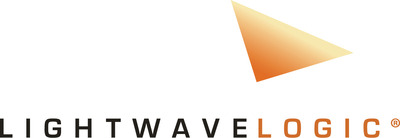Lightwave Logic Secures New Patent for Diamondoid Non-linear Optical Chromophore Patent to Improves Material Robustness
Diamondoid Patent Improves Stability and Performance of Lightwave's Proprietary Polymer Materials for Datacenter Applications to Address Increasing Generative AI Demand Across the Internet
This materials-based chemical-engineered invention advances the overall performance of the company's EO chromophores and their use in high-speed, low power and commercial-grade EO polymer modulators that operate at 200Gbps with drive voltage levels of 1V. The proprietary chromophores are designed with Diamondoid molecular groups that are attached to the chromophore. Results show that when these chromophores are dispersed in a host polymer matrix, the EO materials result in improved macroscopic EO properties, increased poling efficiency, increased loading as well as increased stability of these materials after poling.
The impact of the technology disclosed is significant in that it will increase the overall robustness of polymer materials that are utilized in optical modulator devices. Further, the materials can be easily utilized in silicon foundries for high-volume manufacturing processes.
Dr. Michael Lebby, Chief Executive Officer of Lightwave Logic, commented: "This is an exciting invention that adds to our already robust material patent portfolio, which I firmly believe will help us bring in more commercial license deals for our EO polymers, especially as we work with high-volume manufacturing silicon foundries and 200mm silicon wafers. We see this material as a key component for next generation 800Gbps and 1600Gbps pluggable optical transceiver modules that support the rise of generative AI and upgrading of datacenter hardware equipment."
About Lightwave Logic, Inc.
Lightwave Logic, Inc. (NASDAQ: LWLG) develops a platform leveraging its proprietary engineered electro-optic (EO) polymers to transmit data at higher speeds with less power in a small form factor. The company's high-activity and high-stability organic polymers allow Lightwave Logic to create next-generation photonic EO devices, which convert data from electrical signals into optical signals, for applications in data communications and telecommunications markets. For more information, please visit the company's website at lightwavelogic.com.
Safe Harbor Statement
The information posted in this release may contain forward-looking statements within the meaning of the Private Securities Litigation Reform Act of 1995. You can identify these statements by use of the words "may," "will," "should," "plans," "explores," "expects," "anticipates," "continue," "estimate," "project," "intend," and similar expressions. Forward-looking statements involve risks and uncertainties that could cause actual results to differ materially from those projected or anticipated. These risks and uncertainties include, but are not limited to, lack of available funding; general economic and business conditions; competition from third parties; intellectual property rights of third parties; regulatory constraints; changes in technology and methods of marketing; delays in completing various engineering and manufacturing programs; changes in customer order patterns; changes in product mix; success in technological advances and delivering technological innovations; shortages in components; production delays due to performance quality issues with outsourced components; those events and factors described by us in Item 1.A "Risk Factors" in our most recent Form 10-K; other risks to which our company is subject; other factors beyond the company's control.
Investor Relations Contact:
Lucas A. Zimmerman
Managing Director
MZ Group - MZ North America
949-259-4987
LWLG@mzgroup.us
www.mzgroup.us
![]() View original content to download multimedia:https://www.prnewswire.com/news-releases/lightwave-logic-secures-new-patent-for-diamondoid-non-linear-optical-chromophore-patent-to-improves-material-robustness-302100863.html
View original content to download multimedia:https://www.prnewswire.com/news-releases/lightwave-logic-secures-new-patent-for-diamondoid-non-linear-optical-chromophore-patent-to-improves-material-robustness-302100863.html
SOURCE Lightwave Logic, Inc.







